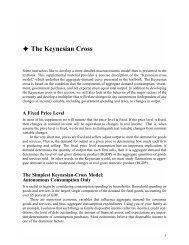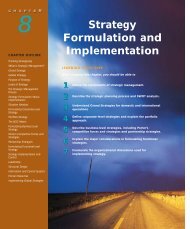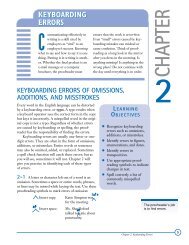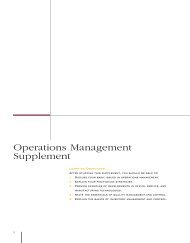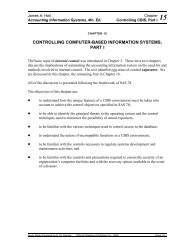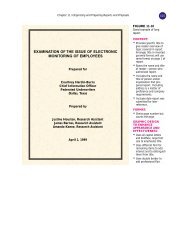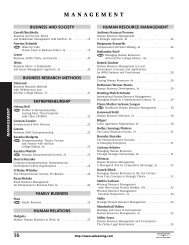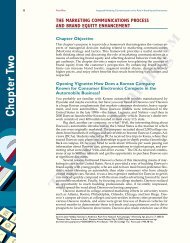REPLACEMENT PROJECT ANALYSIS
REPLACEMENT PROJECT ANALYSIS
REPLACEMENT PROJECT ANALYSIS
Create successful ePaper yourself
Turn your PDF publications into a flip-book with our unique Google optimized e-Paper software.
App11B_SW_Brigham_778312_R2 1/6/03 9:12 PM Page 11B-3<br />
exceeded book value), Row 31 would have shown a tax liability, a cash outflow. In the<br />
actual case, the equipment would be sold at a loss, so no taxes would be paid, and the<br />
company would realize a tax savings of $600. 1<br />
Row 32 The investment in additional net operating working capital (new current<br />
asset requirements minus increases in accounts payable and accruals) is shown here.<br />
This investment will be recovered at the end of the project’s life (see Row 46). No<br />
taxes are involved.<br />
Row 36 Section II of the table shows the incremental operating cash flows, or benefits,<br />
that are expected if the replacement is made. The first of these benefits is the reduction<br />
in operating costs shown on Row 36. Cash flows increase because operating costs<br />
are reduced by $5,000. However, reduced costs also mean higher taxable income,<br />
hence higher income taxes. Here is the calculation:<br />
Reduction in costs cost $5,000<br />
Associated increase in taxes T(cost) 0.4($5,000) (2,000)<br />
Increase in net after-tax cash flows due to cost reduction NCF $3,000<br />
Had the replacement resulted in an increase in sales in addition to the reduction<br />
in costs (that is, if the new machine had been both larger and more efficient), then<br />
this amount would also be reported on Row 36 (or a separate line could be added).<br />
Also, note that the $5,000 cost savings is constant over Years 1 through 5; had the annual<br />
savings been expected to change over time, this fact would have to be built into<br />
the analysis.<br />
Row 37 The depreciable basis of the new machine, $12,000, is multiplied by the appropriate<br />
MACRS recovery allowance for 3-year class property (see Table 11A-2 in<br />
Web Appendix 11A) to obtain the depreciation figures shown on Row 37. Note that<br />
if you summed across Row 37, the total would be $12,000, the depreciable basis.<br />
Row 38 Row 38 shows the $500 straight-line depreciation on the old machine.<br />
Row 39 The depreciation expense on the old machine as shown on Row 38 can no<br />
longer be taken if the replacement is made, but the new machine’s depreciation will<br />
be available. Therefore, the $500 depreciation on the old machine is subtracted from<br />
that on the new machine to show the net change in annual depreciation. The change<br />
is positive in Years 1 through 4 but negative in Year 5. The Year 5 negative change in<br />
annual depreciation signifies that the purchase of the replacement machine results in<br />
a decrease in depreciation expense during that year.<br />
Row 40 The change in depreciation results in a tax reduction which is equal to the<br />
change in depreciation multiplied by the tax rate: Depreciation tax savings <br />
T(Change in depreciation) 0.40($3,460) $1,384 for Year 1. Note that the relevant<br />
cash flow is the tax savings on the net change in depreciation, not just the depreciation<br />
1 If the old asset were being exchanged for the new asset, rather than being sold to a third party, the tax<br />
consequences would be different. In an exchange of similar assets, no gain or loss is recognized. If the market<br />
value of the old asset is greater than its book value, the depreciable basis of the new asset is decreased<br />
by the excess amount. Conversely, if the market value of the old asset is less than its book value, the depreciable<br />
basis is increased by the shortfall.<br />
APPENDIX 11B ■ <strong>REPLACEMENT</strong> <strong>PROJECT</strong> <strong>ANALYSIS</strong><br />
11B-3



